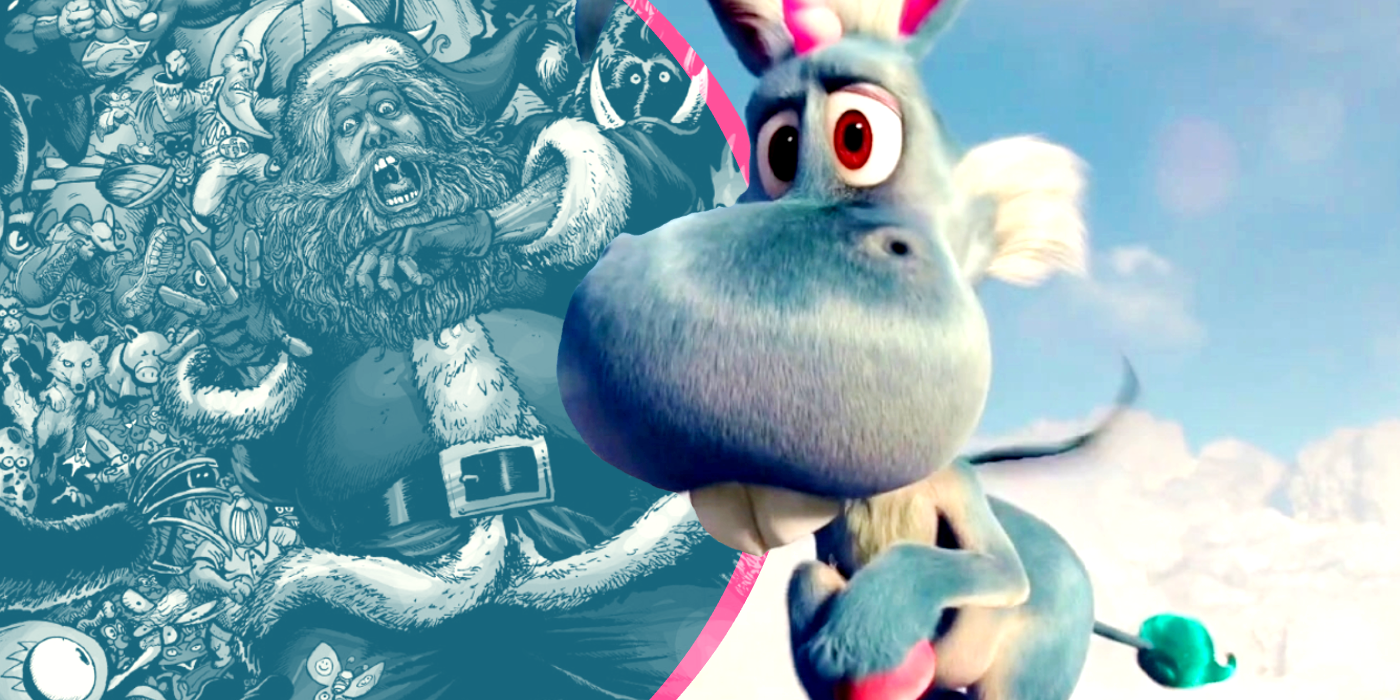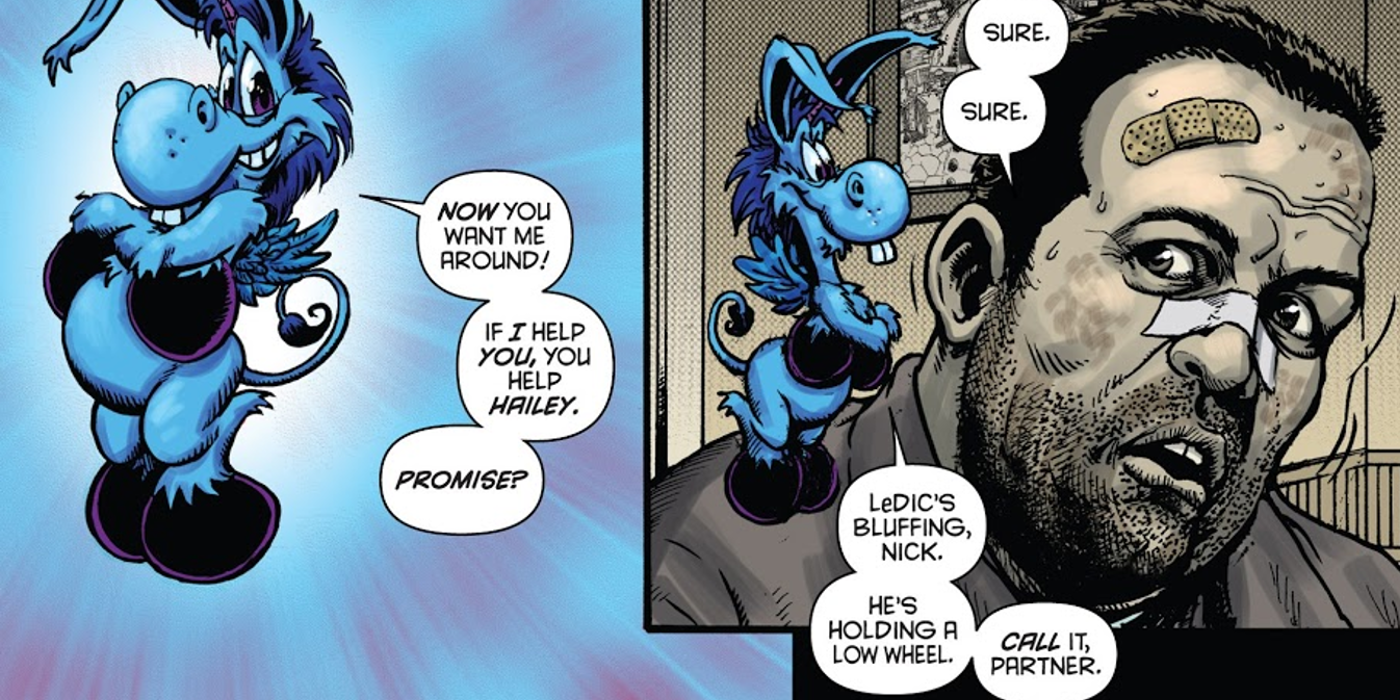The whimsical story of the flying blue unicorn Happy seems to be coming to life with a recent reveal. The miniseries and later television show Happy! played with the idea that everyone has an imaginary friend in childhood, only to forget them later in life. A tweet by the comic's co-creator Darick Robertson proves that life does in fact imitate art, with an eerie reveal from his own childhood artwork.
Happy! was a four-issue miniseries from Image Comics and was written by Grant Morrison with art by Darick Robertson. The story involves a former cop turned private eye teaming up with the imaginary friend of a little girl to save her after she's kidnapped. The comic was later adapted as a live-action show for Syfy starring Christopher Meloni with Patton Oswalt voicing the title character. The comic and show both heavily feature themes of the roles imaginary friends play in peoples' lives, which makes a development from Robertson quite interesting in retrospect.
Seen below, Darick Robertson posted on Twitter asking "Did I imagine HAPPY! when I was only 4 years old?" along with two images. One is a black and white drawing of Happy by Robertson and the other is a piece of childhood artwork with a familiar looking horse. The notebook scribble credits Robertson at age 4 and is very clearly aged. While the horse seen in the picture may be missing Happy's horn and wings, the picture from Robertson's youth is uncannily similar to the imaginary friend he would draw years later, right down to Happy's proportions and buck teeth.
The role of imaginary friends is an important one in Morrison and Robertson's Happy! The titular hero is sent to the bitter, jaded Nick Sax in the hopes that he will save Hailey, whose faith in Happy gives him strength in his mission. The story touches on the idea that the companions thought up by children serve as protection from reality in youth until they are no longer needed, at which point they're forgotten (though some adults can still see them in extreme circumstances.) Happy! the show went even further by likening them to gods whose existence is dependent on belief. With the discovery of Robertson's art, it's an interesting parallel to the story he had a hand in crafting - was this earlier version of Happy similarly forgotten, only to return to Robertson in adulthood?
Perhaps Robertson unknowingly based Happy on a childhood imaginary friend, or perhaps his attempt to craft an archetypal example of an imagined companion tapped into the same artistic instincts he had decades ago. If it is an early version of Happy, then Robertson has taken his and Grant Morrison's story to a whole new level of meta, making the titular being an imaginary friend come to life in more ways than one.
Source: Darick Robertson


